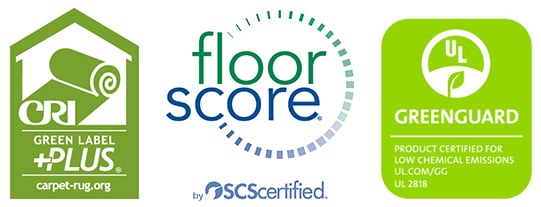By Delaney Sondag
Sustainability Analyst
 A growing body of scientific evidence indicates that the air within homes and other buildings can be more seriously polluted than the air outdoors (EPA, n.d.). This is the case even in the largest and most industrialized cities. An average American spends 90 percent of his or her time indoors and many spend most of their working hours in an office building (EPA, n.d.). Many of us are not aware of the harmful indoor air pollutants we are exposed to throughout our day and the adverse effects this exposure can have on our health. Fortunately, there are several ways to help control indoor air pollutants both in the office and at home.
A growing body of scientific evidence indicates that the air within homes and other buildings can be more seriously polluted than the air outdoors (EPA, n.d.). This is the case even in the largest and most industrialized cities. An average American spends 90 percent of his or her time indoors and many spend most of their working hours in an office building (EPA, n.d.). Many of us are not aware of the harmful indoor air pollutants we are exposed to throughout our day and the adverse effects this exposure can have on our health. Fortunately, there are several ways to help control indoor air pollutants both in the office and at home.
According to the US Environmental Protection Agency (EPA), improved indoor air quality (IAQ) can result in higher productivity and fewer lost work days. The EPA estimates that poor IAQ costs the nation tens of billions of dollars each year in lost productivity and medical care. The U.S. Green Building Council  requires that all new construction and existing buildings seeking LEED certification meet minimum indoor air quality standards for both ventilation and monitoring. These standards are defined by ASHRAE Standard 62.1-2010. In addition to meeting minimum IAQ standards, an indoor air quality management program is required.
requires that all new construction and existing buildings seeking LEED certification meet minimum indoor air quality standards for both ventilation and monitoring. These standards are defined by ASHRAE Standard 62.1-2010. In addition to meeting minimum IAQ standards, an indoor air quality management program is required.
There are three main factors that contribute to poor IAQ. The first is the presence of indoor air pollution sources. Common pollutant sources include biological contaminants, such as from mold, dust mite allergens, or pollen; chemical pollutants, such as tobacco smoke and emissions from products used in the building (i.e. office equipment, adhesives, furniture, carpeting, upholstery, and cleaning products); and particles such as dust or dirt. The second factor affecting indoor air quality is inadequate ventilation. Inadequate ventilation increases indoor pollutant levels as not enough outdoor air is brought into the building and not enough indoor air pollutants are carried out. Third is the use of the building. Indoor air pollutants can be circulated from areas of the building used for additional purposes other than offices, such as restaurants or dry-cleaning stores, to offices in the same building. For buildings with underground parking garages, carbon monoxide from automobile exhaust can also contribute to pollution in the above office spaces.
Some pollutants can cause health problems such as sore eyes, burning in the nose and throat, headaches or fatigue. Other pollutants can have more serious effects on our health, such as cause or worsen allergies, respiratory illnesses (such as asthma), cancer, and other long-term conditions. In some cases, building occupants experience symptoms that do not fit the pattern of a particular illness and cannot be traced to a specific source. This phenomenon is referred to as sick building syndrome.
Even though there are numerous factors that affect the quality of the indoor environment, most indoor air quality problems are preventable and easily corrected. Here are some things you can do in your office building:
- Do not block air vents or grilles with furniture or equipment.
- Refrain from placing computers or other heat-producing equipment near or under an HVAC sensor device system, as this will trigger unnecessary cooling.
- Establish routine maintenance of HVAC systems with periodic cleaning or replacement of filters.
There are additional ways to improve indoor air quality at home:
- Test for radon in your home. Radon is the second leading cause of lung cancer. Radon gas enters your home through cracks and openings in floors and walls in contact with the ground. You can test your home with a do-it yourself radon kit.
- Reduce asthma triggers such as mold and dust mites. This can be done by regular dusting and cleaning. Purchasing allergen-proof mattress and pillow covers can also help.
- Prevent mold by controlling moisture. Mold can grow anywhere there is moisture build up in your home.
Here’s a Tip:
 Integrate indoor air quality concerns into your purchasing decisions. Look for certification labels on products such as GREENGUARD for a variety of building products, Floorscore for flooring, and the Green Label Plus for Carpets. These certifications ensure the product has been tested for volatile organic compounds.
Integrate indoor air quality concerns into your purchasing decisions. Look for certification labels on products such as GREENGUARD for a variety of building products, Floorscore for flooring, and the Green Label Plus for Carpets. These certifications ensure the product has been tested for volatile organic compounds.
Helpful Links:
Environmental Protection Agency’s Guide to Indoor Air Quality
Indoor Air Quality Guide: Best Practices for Design, Construction, and Commissioning
Healthy Indoor Environment Protocols for Home Energy Upgrades
© 2017 Sustainable Investment Group. All rights reserved.



